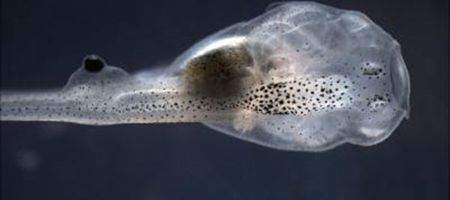In a deeply weird experiment, scientists have transplanted eyes onto the rear ends of tadpoles, and discovered that they can still see.

The experiment shows vision doesn’t, as you’d surely assume, need a direct neural connection to the brain. The team says it has implications for the treatment of blindness – although it stops short of recommending eye transplants for the backside.
“One of the big challenges is to understand how the brain and body adapt to large changes in organization,” says Douglas J Blackiston of Tufts University. “Here, our research reveals the brain’s remarkable ability, or plasticity, to process visual data coming from misplaced eyes, even when they are located far from the head.”
In their experiment, the team surgically removed the developing eyes from frog embryos, marked them with fluorescent proteins and grafted them onto the rear ends of another set of embryos. They grew into what are known as ‘ectopic eyes’, after which the recipients’ natural eyes were removed. Fluorescence microscopy showed various patterns of nerves – but none of the animals developed nerves connecting the eyes to the brain.
The team then developed a test to see whether the tadpoles could see. Different areas of water were lit by either red or blue LED lights, and the tadpoles given electric shocks in one.
And, found the team, just over 19 percent of the animals learned to respond – despite the fact that their optic nerves were connected only to the spine. They behaved in exactly the same way as normal tadpoles.
“This has never been shown before,” says Professor Michael Levin. “No one would have guessed that eyes on the flank of a tadpole could see, especially when wired only to the spinal cord and not the brain.”
The findings show just how adaptable the brain can be. And one of the most fascinating areas for future investigation, say Blackiston and Levin, is the question of exactly how the brain recognizes that the electrical signals coming from tissue near the gut should be interpreted as visual data.
In computer engineering, Levin points out, this problem is usually solved by a ‘header’ — a piece of metadata attached to a packet of information that indicates its source and type. It may be something like this that’s going on here.






